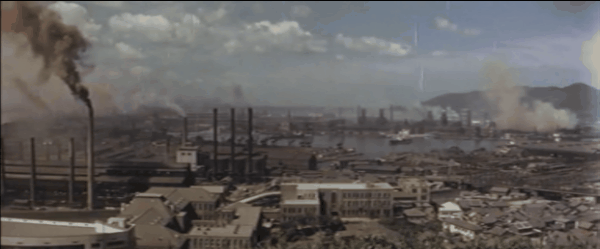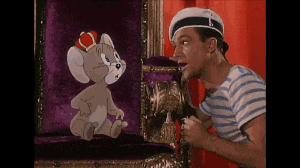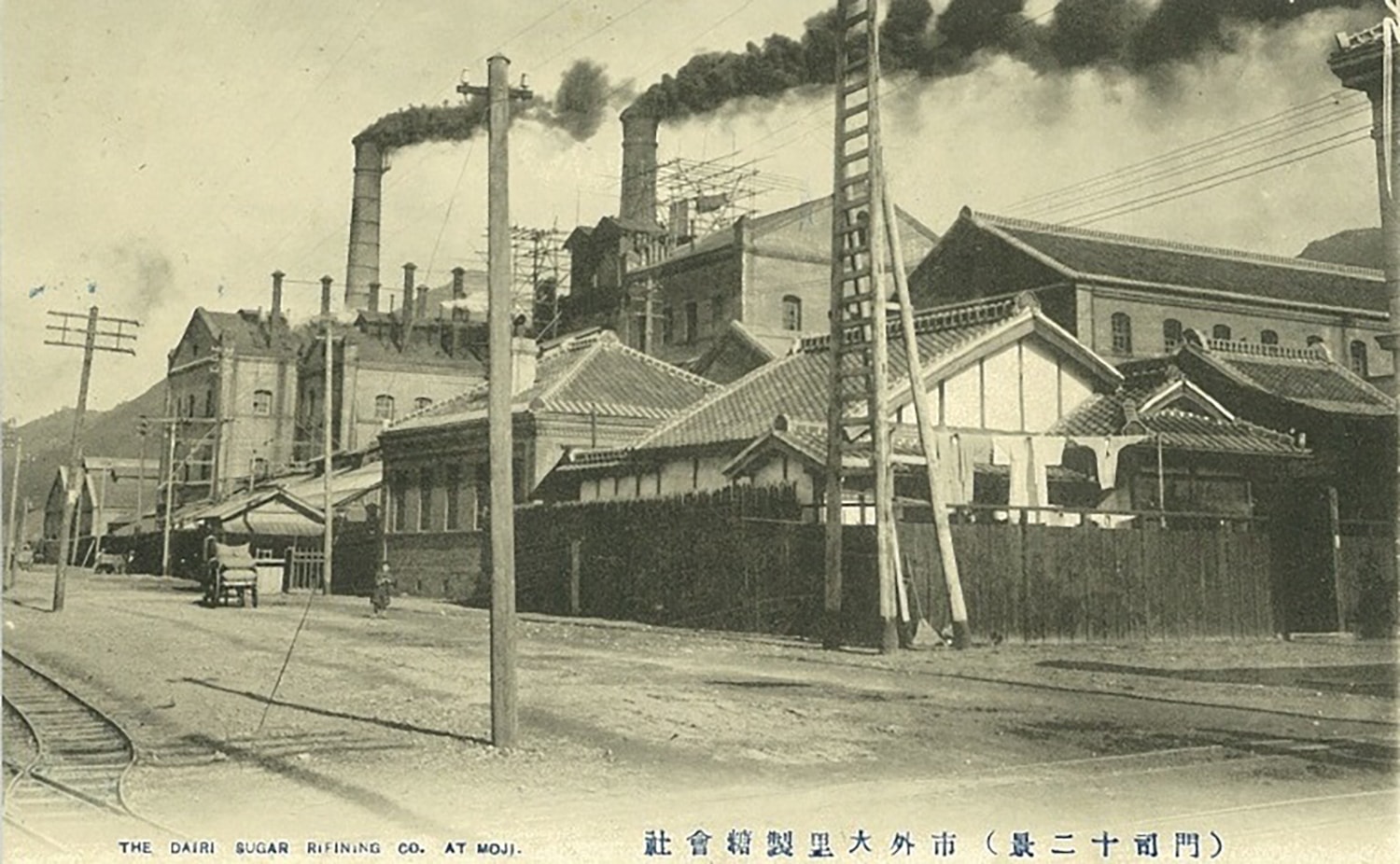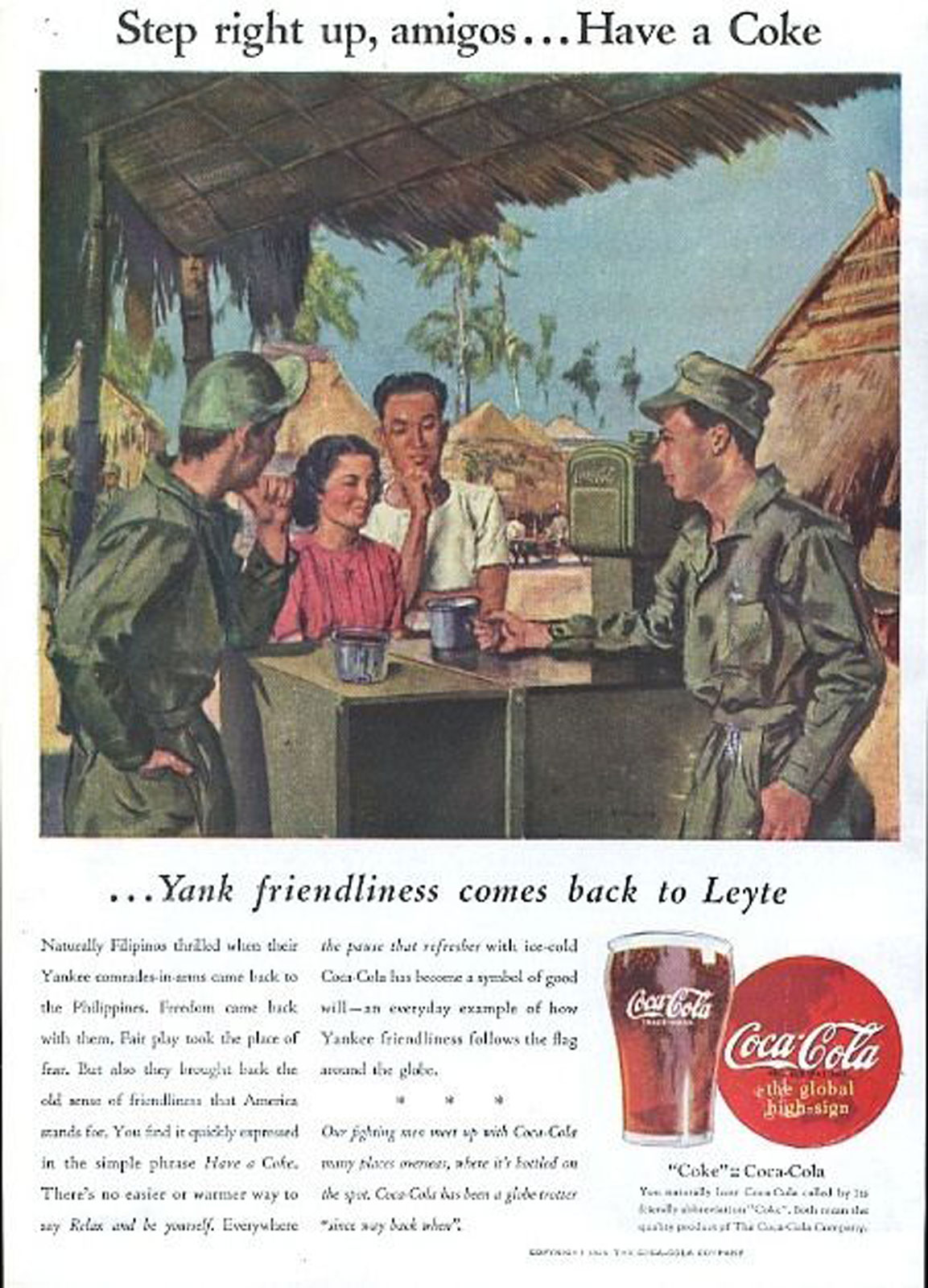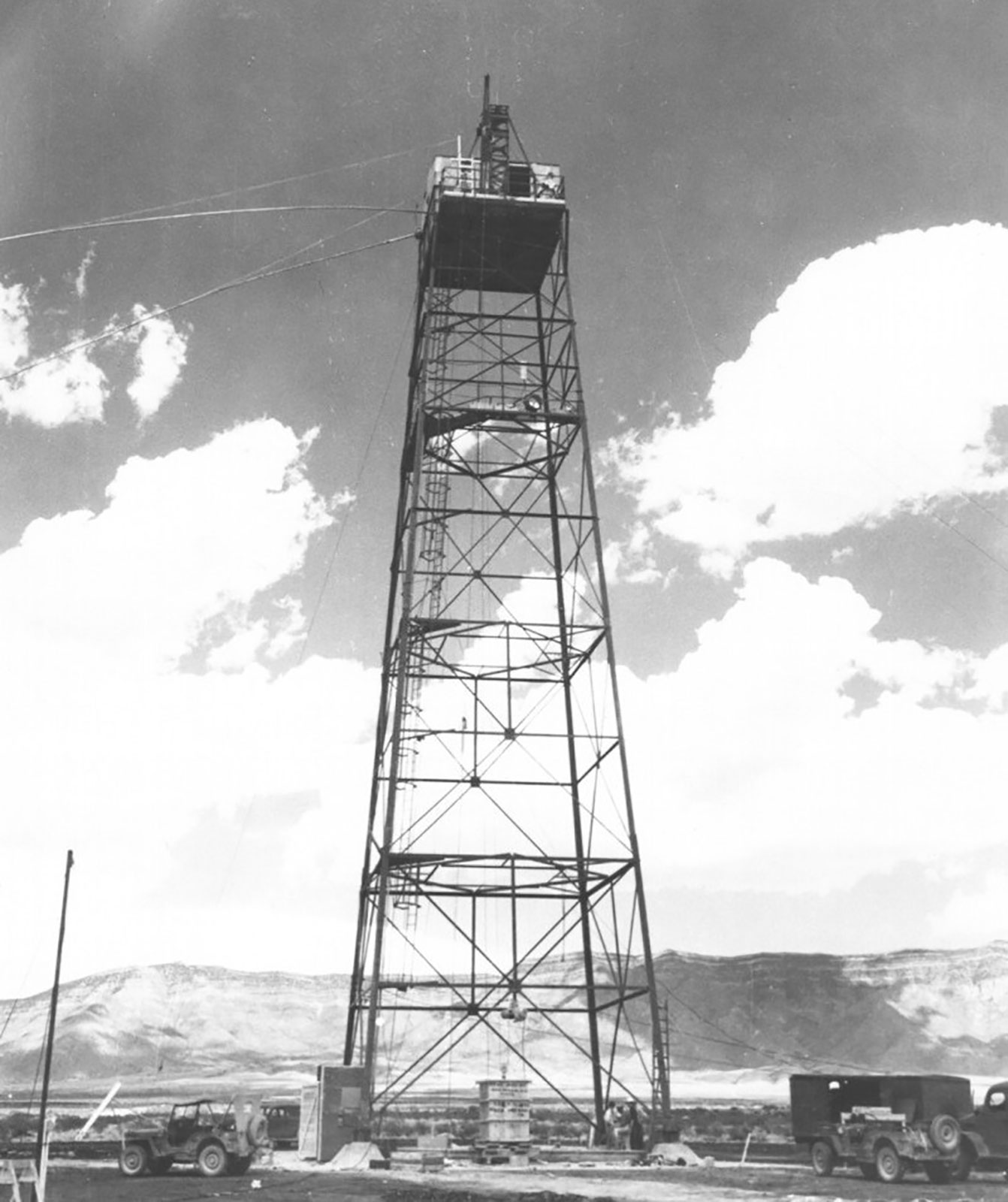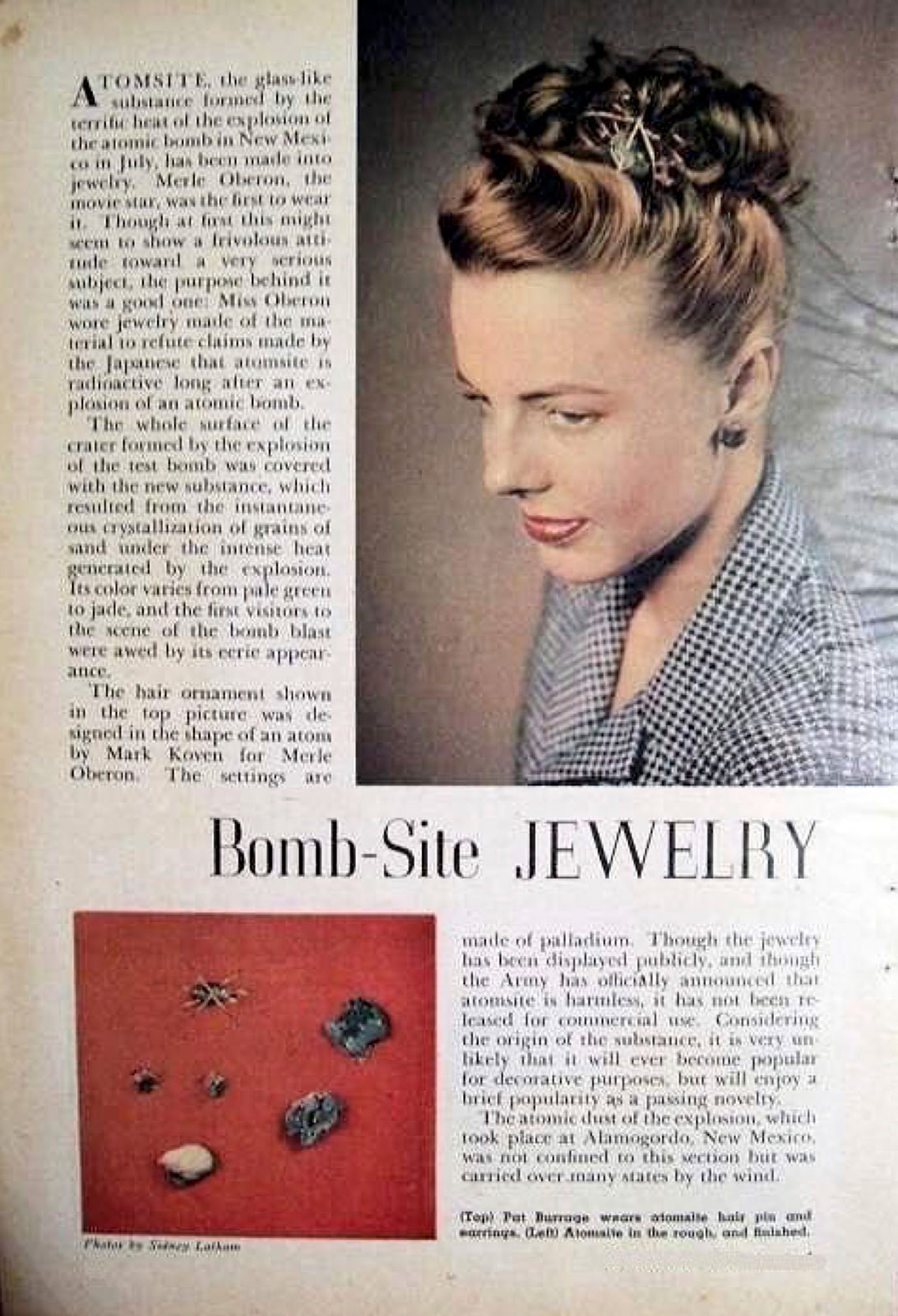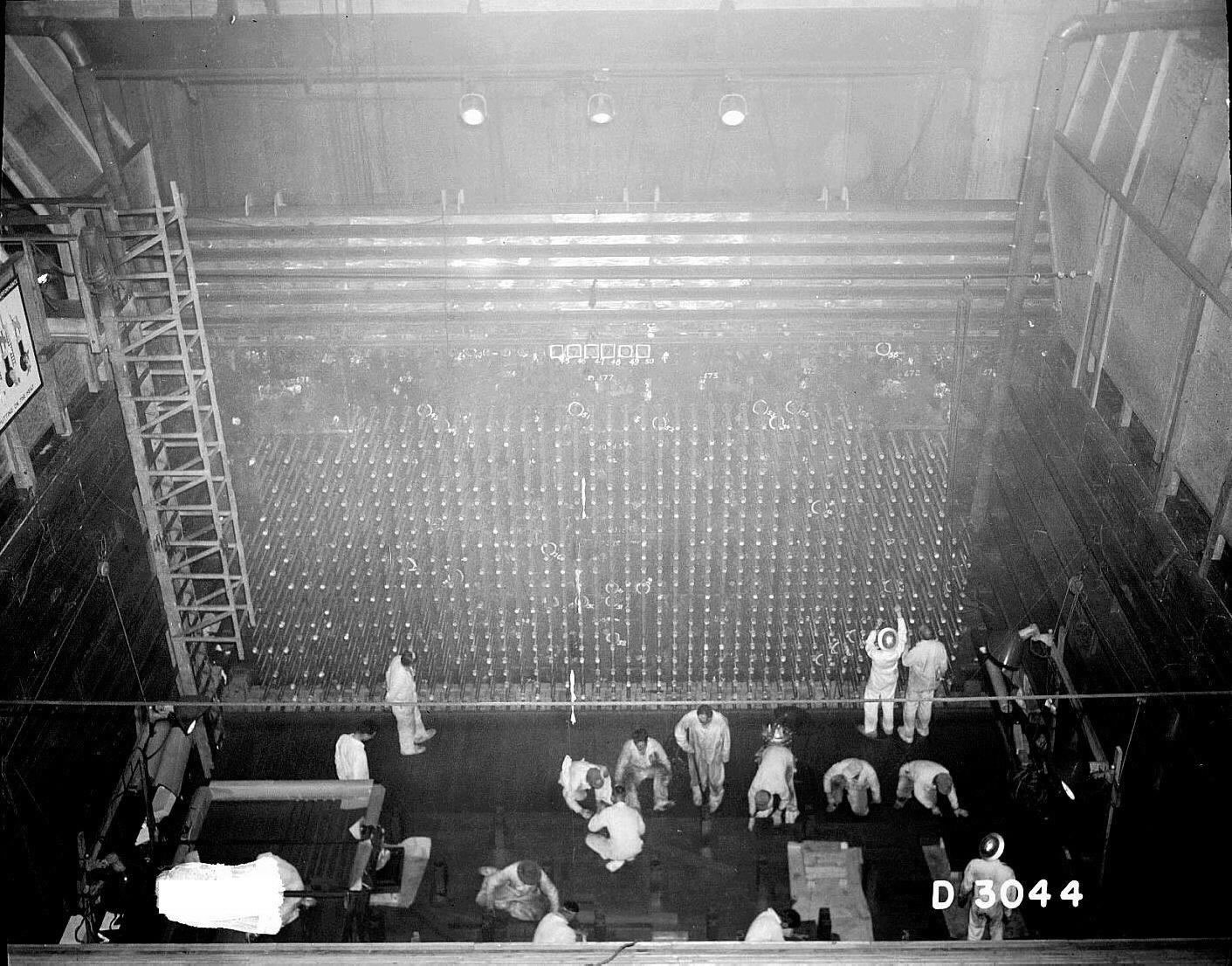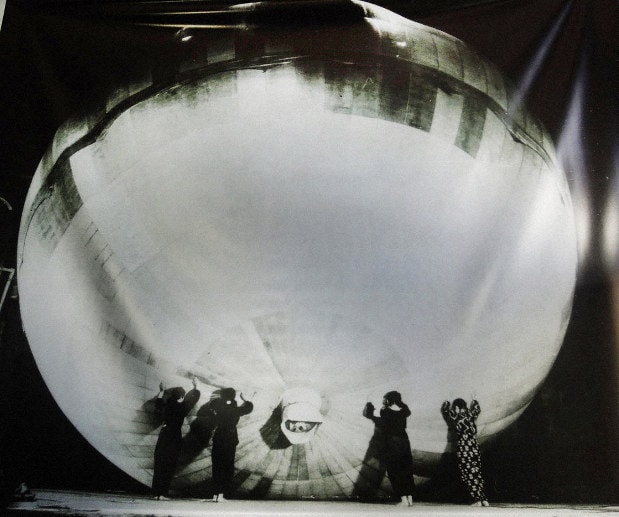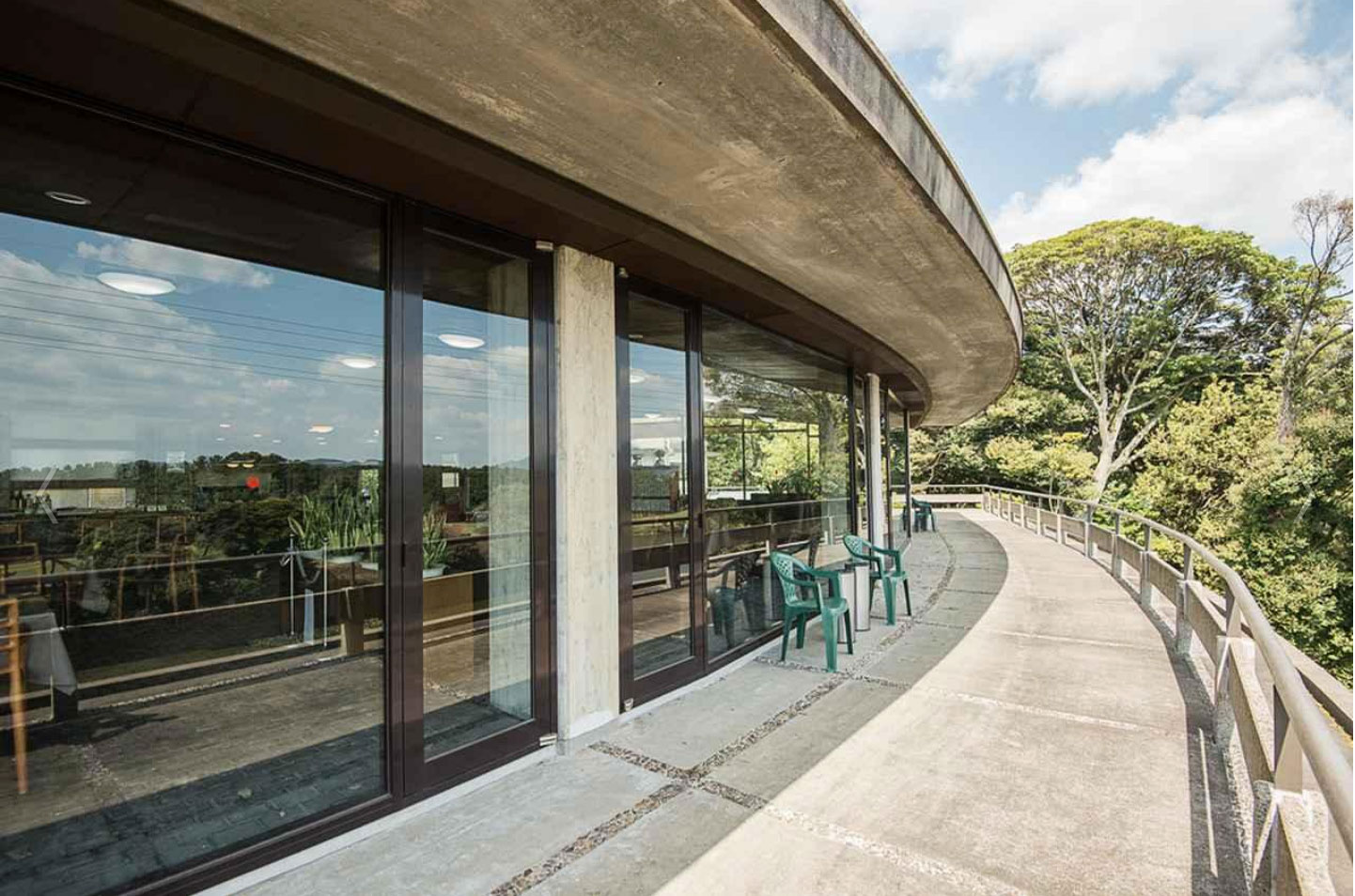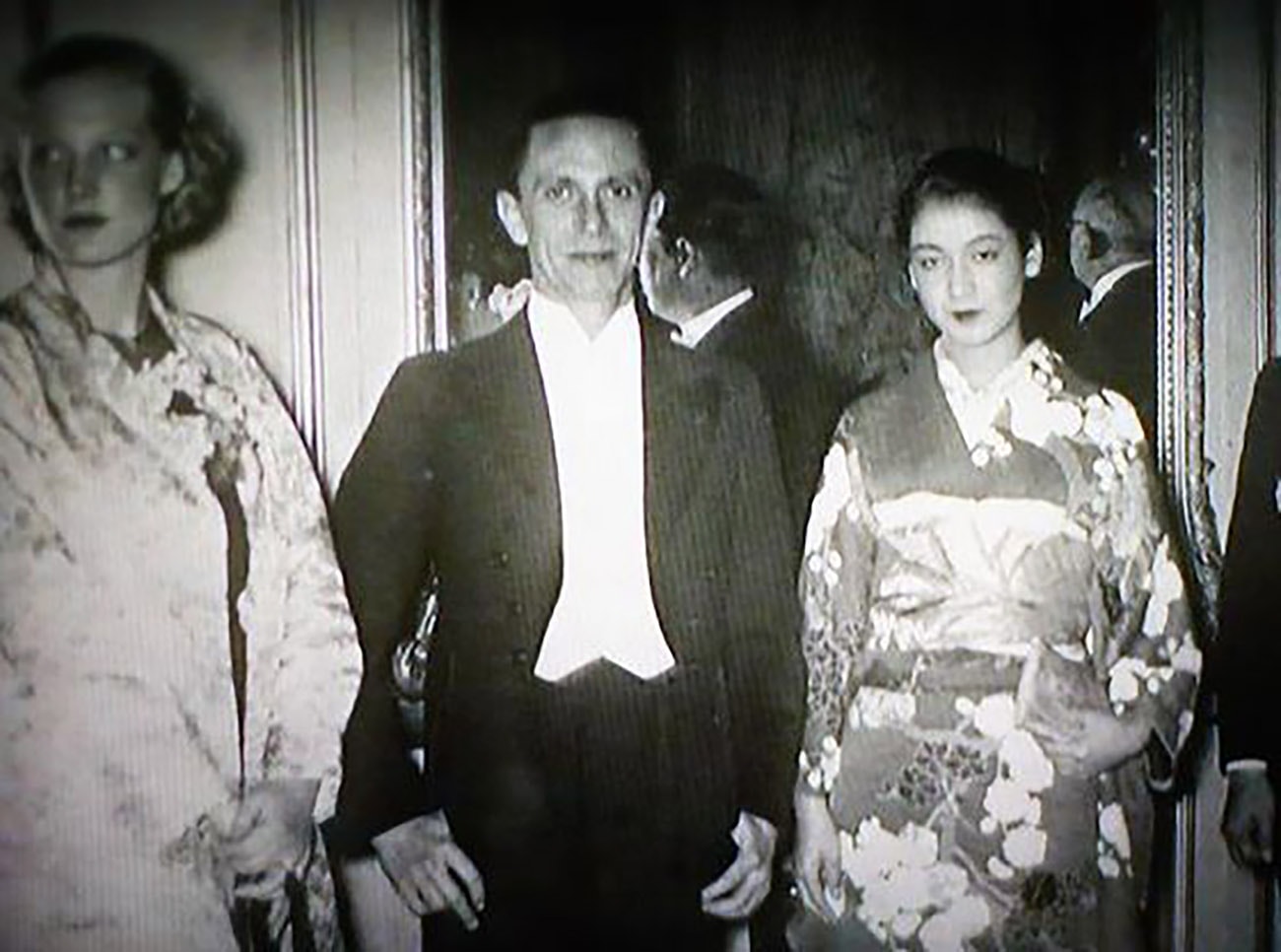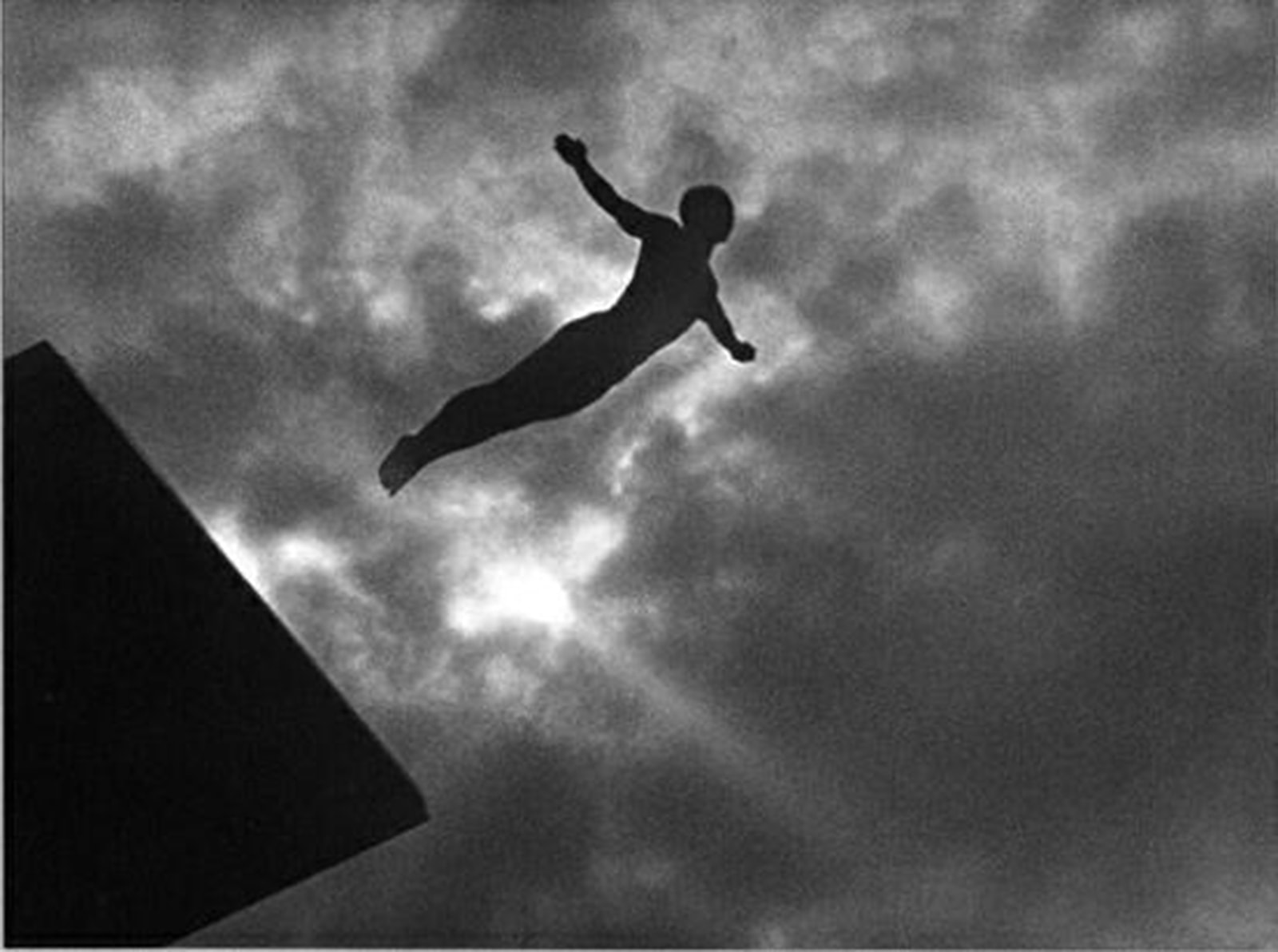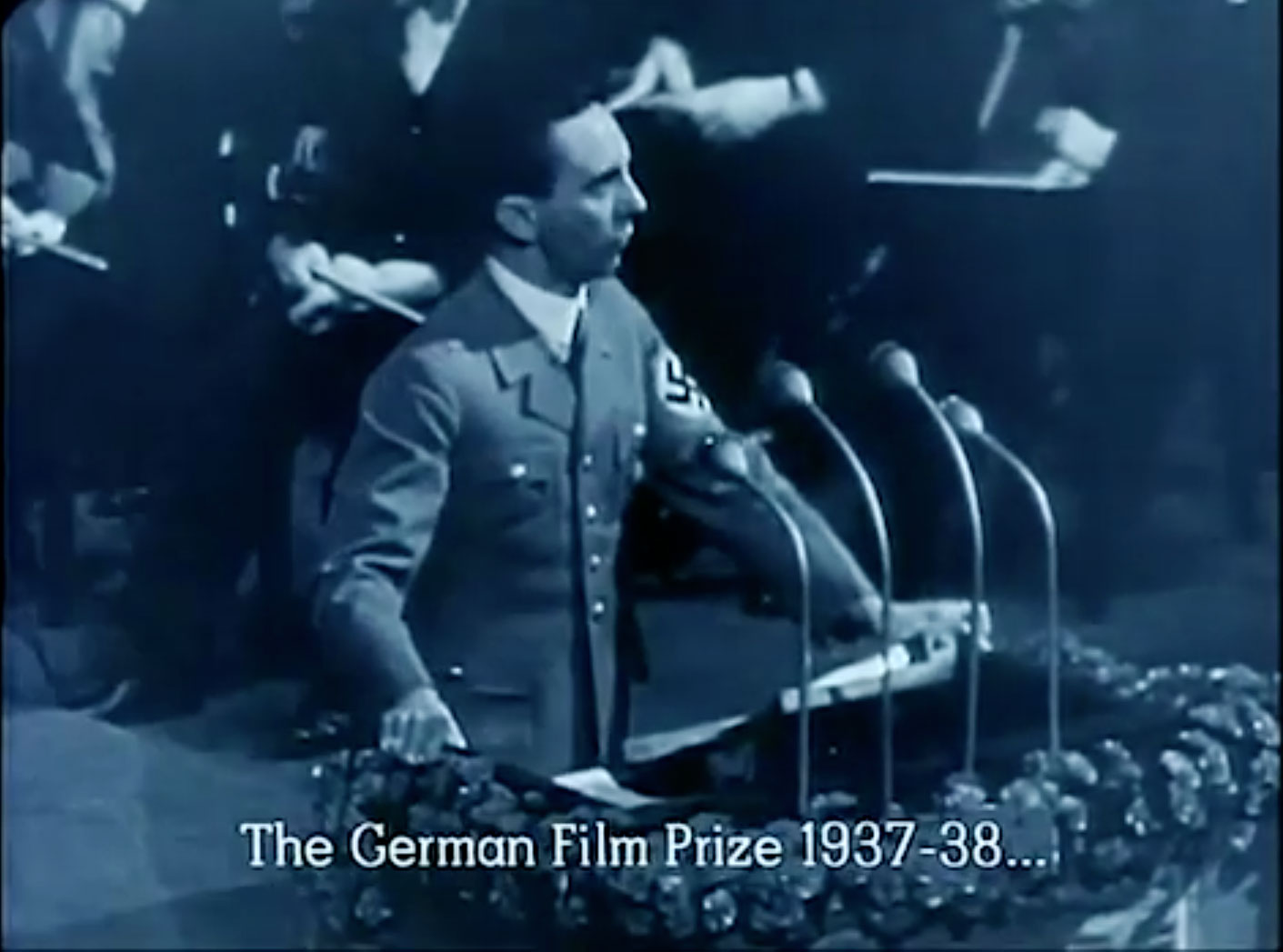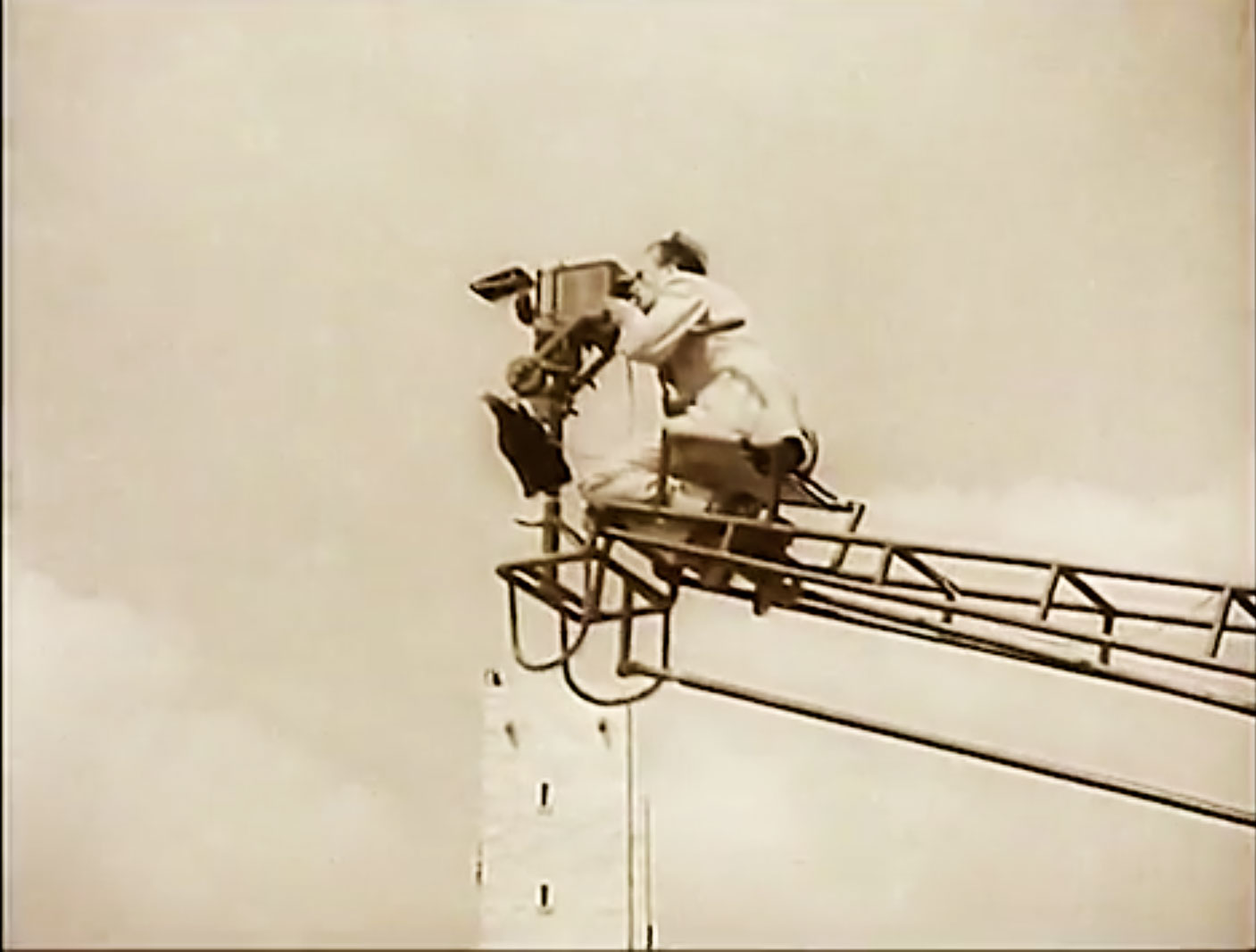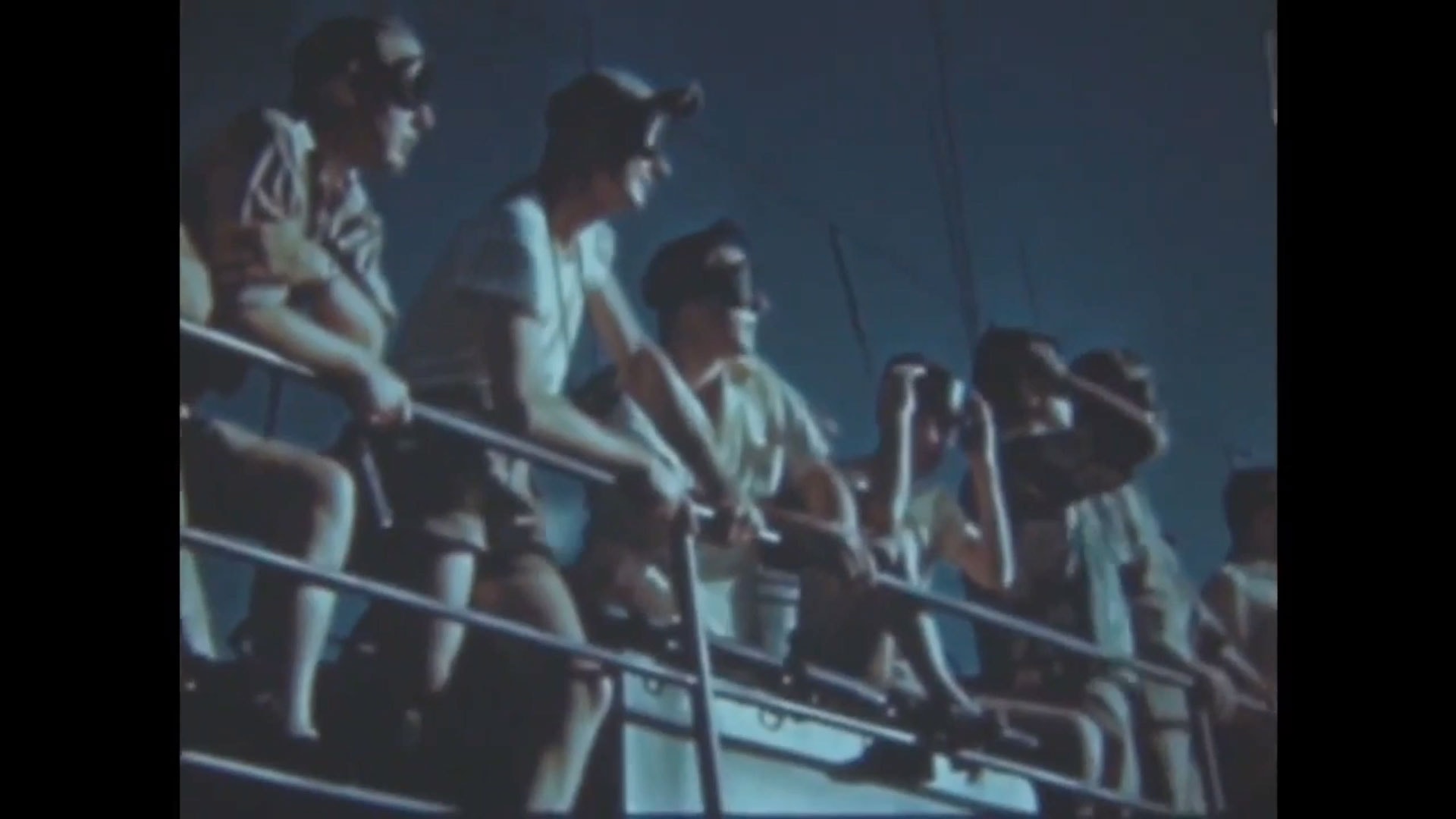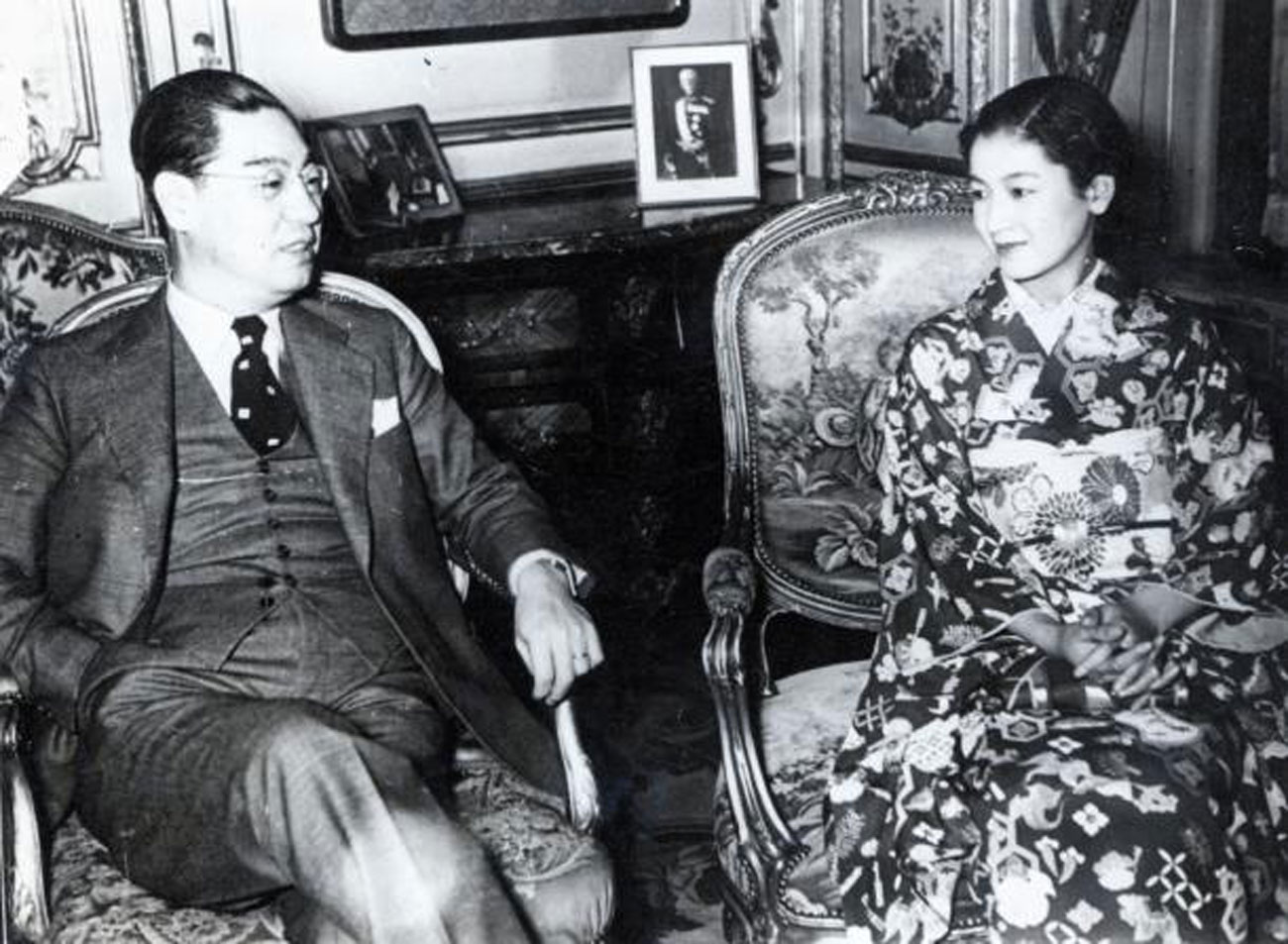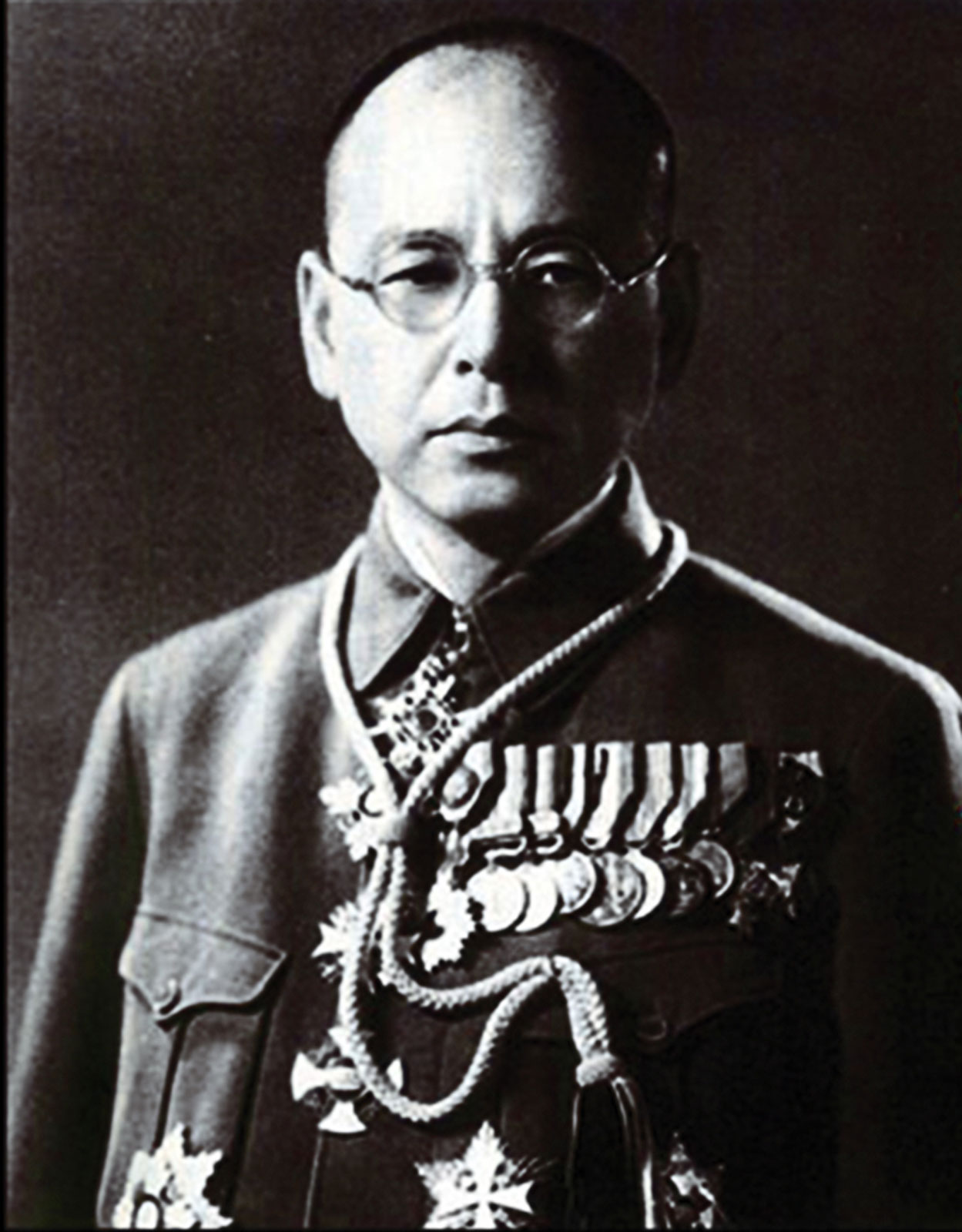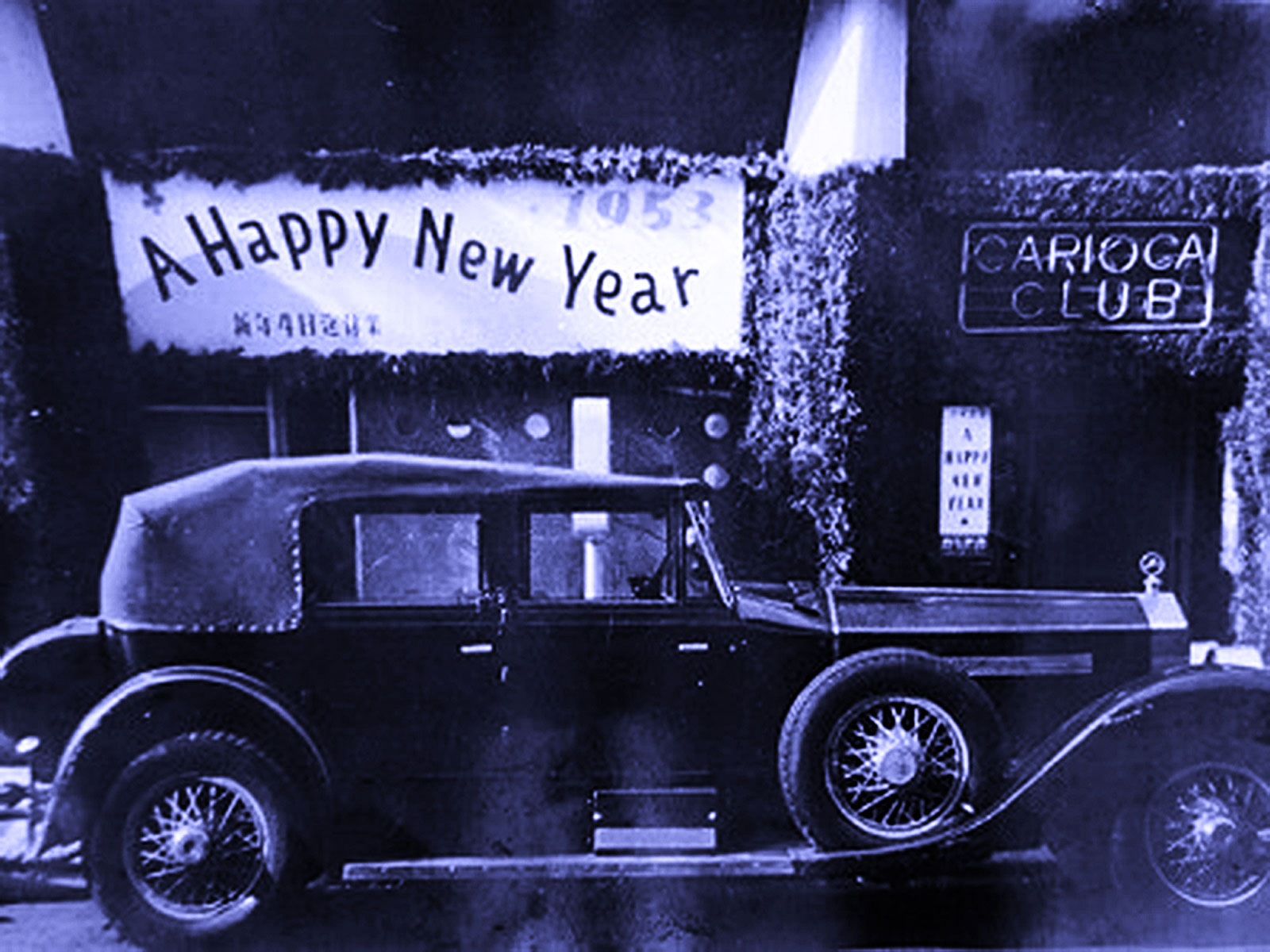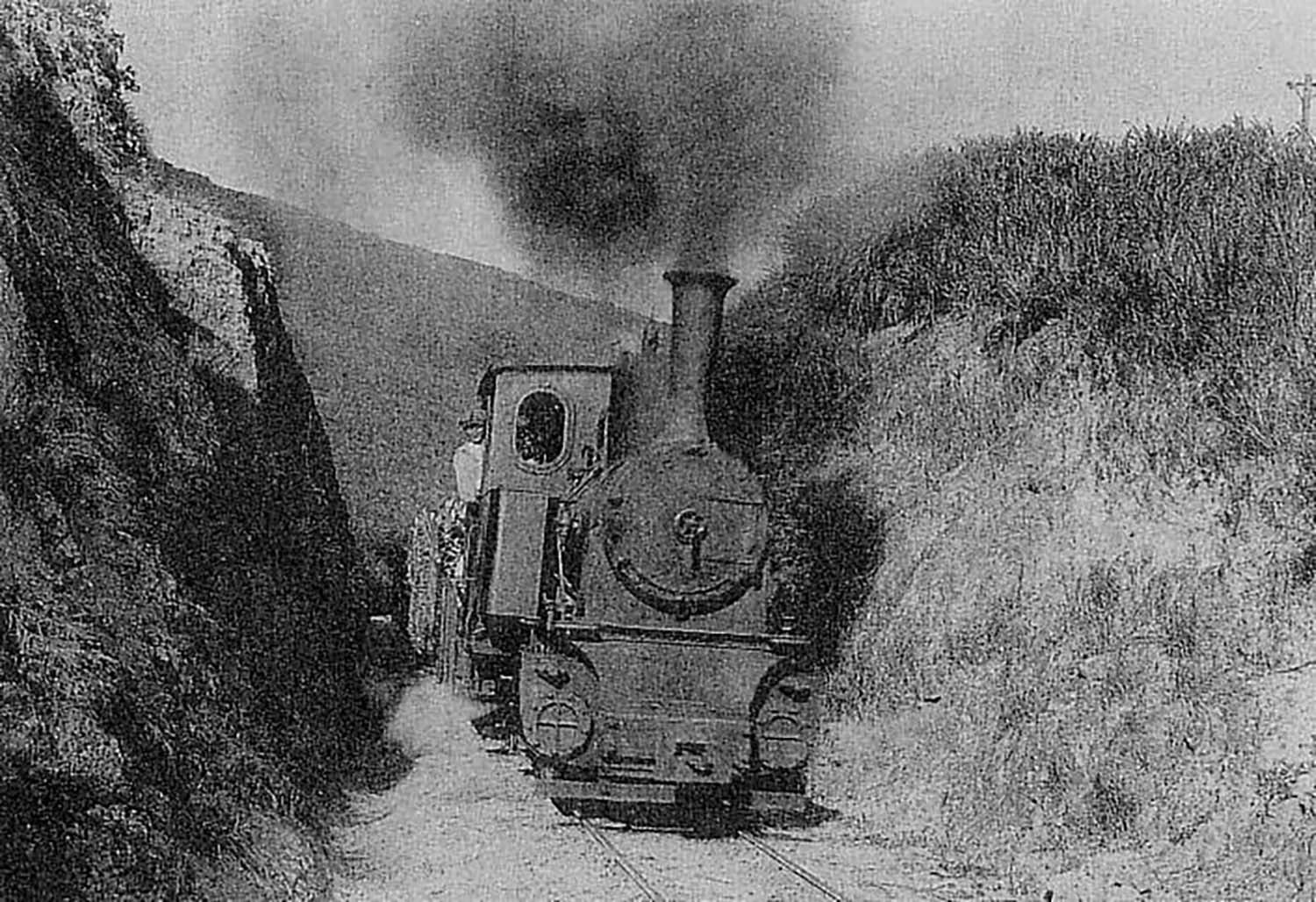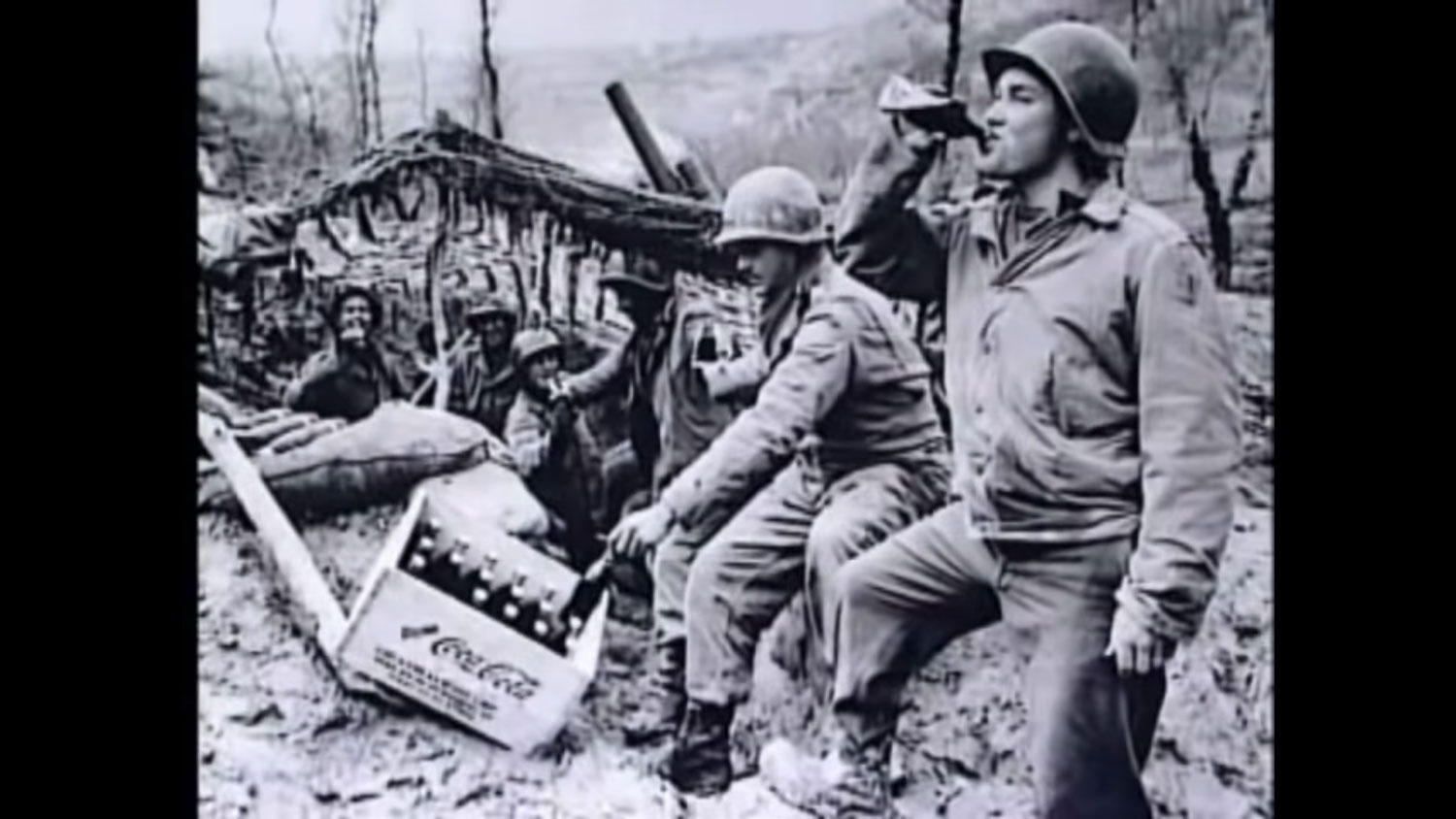21:00
The loading on B29 Bockscar starts.
22:00
A pre-flight briefing is held for crew members.
01:15
Bockscar performs pre-flight checks.
01:58
The two weather planes, Enola Gay and Laggin' Dragon, take off for their selected cities.
02:47
Bockscar lifts off from Tinian Island.
02:51
The observation plane, Great Artiste, takes off.
02:53
The camera plane, Big Stink, takes off.
03:00
The weaponeer on Bockscar switches out the safety plugs.
08:10
Bockscar reaches the rendezvous point.
08:50
Bockscar heads in the direction of the target city.
09:44
Bockscar arrives at Kokura.
10:32
Bockscar heads for the secondary target, Nagasaki.
SECOND PLANET
A Place Without a Catastrophe
Tinian island is located about 5km southeast of Saipan.
Traveling there takes only 15 minutes in a small airplane. Tinian has a population of approximately 3,000 on its 101.8 square km land and is the second largest island next to Saipan in the Northern Mariana Islands.
Freedom Airline runs 13 services a day between Saipan and Tinian.
Since travel only takes 15 minutes, Tinian is convenient for day trips from Saipan.
Tinian is a beautiful island covered with green nature and has lots of diving spots.
In addition to its most famous Tinian Grotto, the so-called Dump Cove, where you can see ruined battleplanes and tanks in the water, is highly recommended. Rent-a-car offers convenient travel on the island. You can visit the ruins of the indigenous Chamorro villages as well as the ruined shrines built during the Japanese occupation.
After a great day in Tinian, let’s go back to Saipan on the late-afternoon flight. When the airplane departs the island, you will notice four old runways that have now been mostly covered by jungles. From the runway on the north edge, the B29 Bockscar departed at 2:47 a.m. on August 9, 1945.


It takes 15 minutes to fly from Saipan to Tinian.
An atomic bomb has a rather simple structure to create a massive amount of energy using fissile material, which creates fission in a short time by absorbing neutrons in the nucleus.
An atomic bomb has two types, a uranium bomb and a plutonium bomb, and the one loaded on the Bockscar on August 9, 1945, was the latter. A plutonium bomb uses plutonium-239 as a fissile material. Uranium is also a fissile material and only specific isotopes like plutonium-239 of these can be used to make an atomic bomb. Uranium exists in nature. Thus, making a uranium bomb requires excavating and purifying uranium to take out uranium-235. In contrast, plutonium can be produced artificially and is easier to fission than uranium-235, which reduces the necessary amount of uranium to one-third.
The amount of plutonium Bockscar was carrying on August 9 was 6.2 kg.
Let us then introduce some places related to the research and manufacturing of the atomic bomb. The Los Alamos National Laboratory in New Mexico is where scientists including Robert Oppenheimer conducted the planning and manufacturing of the atomic bomb. And there is the Hanford Site in Washington State where plutonium was extracted. Between 1943 and 1945, three nuclear reactors and plutonium processing facilities were built. The Hanford Site grew further during the Cold War with 50,000 people living here at its peak. “Fatman,” loaded on Bockscar, used plutonium produced in the B reactor at Hanford Site.
A plutonium bomb made from extracted plutonium at the Hanford Site was tested in the desert, which was then called the USAAF Alamogordo Bombing and Gunnery Range. This was the famous Trinity nuclear test. It was the first detonation of a nuclear weapon in the United States, which took place on July 16, 1945. Trinity, the code name of the test, is a Christian doctrine. Although the truth behind this naming is unknown, it is said that Oppenheimer took a word from a poetry piece that her girlfriend introduced to him. His girlfriend, Jean Tatlock, committed suicide about a year and a half before the Trinity test. The real cause of her death, considering her membership in the communist party, remains a mystery.
Trinity nuclear test was the first detonation of a nuclear weapon in the United States, which took place on July 16, 1945. Trinity, the code name of the test, is a Christian doctrine. Although the truth behind this naming is unknown, it is said that Oppenheimer took a word from a poetry piece that her girlfriend introduced to him. His girlfriend, Jean Tatlock, committed suicide about a year and half before the Trinity test. However, the real cause of her death considering her membership to the communist party remains in mystery.
In the Trinity test site, the massive blast created a huge crater. After the test, glassy residue remained. The glass was primarily composed of arkosic sand consisting of quartz grains and feldspar melted by the atomic blast. This light green glass object was named Trinitite.
Trinitite from the test site was then turned into an accessory. In the fall of 1945, a jewelry designer released “piercings” and “broaches” using trinitite. At that time, many models and celebrities enjoyed wearing them.
Currently, the “Nuclear Tour” at the Trinity Site has become a popular tourism product. The site opens only twice a year, on the first Saturdays of April and October.
Other tourism spots related to atomic bombs are the Oak Ridge National Laboratory in Tennessee, which was said to be formed overnight, and the Nevada Test Site. Chongqing and Atomic City in Qinghai, China; Semipalatinsk Test Site in Kazakhstan; Bikini Atoll, Montebello Islands; Maralinga test site in Australia; and the desert test site in Algeria are also open for nuclear-related tourism.
In 1945, the cost of developing and manufacturing an atomic bomb was approximately $2 billion. About 600,000 people were involved in this project. These include not only scientists but also city planners and architects who create cities for bomb development, as well as many workers who did not know the details of their work.
When the Allied Forces bombed cities in Japan and Germany, they performed simulations using precise models and aerial photographs of each city. A 3-D model of the town was created to identify the atomic bomb target in Kokura. Maps were made for cities including Hiroshima, Niigata, Nagasaki, and Kyoto. Many cities that were exempt from being atomic bomb targets were burned down by air strikes. From the remaining materials, we can find that the Allied Forces had detailed maps of at least 45 cities in Japan.
The former Yahata City (present-day Yahata Higashi and Nishi wards) had Yahata Steel Works and thus was targeted in the first mainland air raid by the Allied Forces and was bombed many times during the war. In the air raid on August 8, 1945, a large number of incendiary bombs dropped on the city of Yahata, causing serious damage to the city and the surrounding areas. Incendiary bombs were used to bomb Japanese and German cities during WWII, and the Allied Forces constructed a test site in Dugway, Utah, to test these bombs and built a “Japanese village” and a “German village” there. In the Japanese village, 12 wooden row houses with 24 rooms were built. Based on the data accumulated from the experiments, air strikes were carried out on Japanese cities.
Antonin Raymond was the architect of this Japanese village. Raymond, who worked at Frank Lloyd Wright’s office, came to Japan in 1919 as an assistant of the Imperial Hotel project, and then set up his own studio in Tokyo. After returning to the United States following the international situation surrounding Japan, Raymond was asked to design the Japanese village. He undertook the design of a “typical Japanese house” and gave advice on selecting the appropriate types of wood and furniture for the construction.
Raymond returned to Japan after WWII and reopened his studio. He and his followers lead the postwar modernist architecture movement in Japan. Japanese architects who worked at the Raymond office included Kunio Maekawa, who designed the Fukuoka Art Museum, and Junzo Yoshimura, who worked on the Kokura Country Clubhouse. Raymond’s office also designed the Yasukawa Electric Corporation’s head office building, the sports and recreation facilities of Yahata Steel Works, and the clubhouses at Moji Golf Club.

August 9 in Kokura.
“He,” a junior at the local junior high school, was working as a student employee at Toyo Toki (present-day TOTO) located near the target location of the atomic bomb. Students were mobilized to work at military facilities, and he worked there between March and August 1945.
He was making a pottery pot, which was designed as a part of a phantom rocket, “Shusui.” Two pottery bowls were provided to each student as their monthly salary. Once the pot is shaped, it had to be dried for about two hours before it was fired in the kiln. While waiting for the pot to dry, he climbed up the roof of the factory with his friend to take a break.
At around 9:10 a.m., the air raid alert began to sound, but they were too accustomed to the alarm by then. They would ask, “Would the U.S. aircraft drop anything today? Or is it just another reconnaissance aircraft?” The sky was cloudy. He could hear the engine sound of the B29 but did not see it at all. B29 stayed for about 30 to 40 minutes, but the engine sound gradually disappeared to the west. “They stayed long today,” they told each other.
The code name of the atomic bomb loaded on the B29 boxcar that flew off Tinian Island on August 9 was “Fatman.” This came from its large body line compared with another atomic bomb that was dropped on Hiroshima a few days ago. It has been said that this code name refers to the British Prime Minister Churchill or Kasper Gutman, a character in the movie The Maltese Falcon.
Because “Fatman” had a unique shape, the Allied Forces made a conventional aerial bomb, commonly called “pumpkin,” and loaded it with the same weight of explosives as a test. In a place near Kokura, a pumpkin bomb was dropped on Ube in Yamaguchi on July 29, 1945.


Kita no Sannin (The Three People in the North) is a Toho movie produced in 1945. It was the last movie produced during the war and was released on August 5, 1945. It was also the only narrative-based film screened in Japan on August 9. Kita no Sannin is the story of three female correspondents working at an air base located somewhere north. Setsuko Hara, Hideo Takamine, and Hisako Yamane are featured in the film.
During the war, Setsuko Hara, at 17 years old, was selected as the heroine of the first Japanese-German film Atarashiki Tsuchi (New Land) directed by the German master Arnold Funk. Reni Riefenstahl also starred in some of Funk’s movies, such as The Holy Mountain and Storm over Mont Blanc. As known, Riefenstahl later became a film director with the support of Adolf Hitler and produced propaganda films including the 1934 documentation of the Nazi Party Triumph of the Will and the 1936 Berlin Olympics documentary film Olympia.
In 1937, Setsuko Hara and others departed from Shimonoseki to Dalian and took the Siberian Railway to visit Berlin. On the same boat from Shimonoseki was Masahiko Amakasu, who later became head of the Manchukuo Film Association, a propaganda film corporation in the Empire of Manchuria. On her way to Berlin, Hara stopped by at Xinjing (today’s Changchun) and Harbin to promote the film on the radio. Atarashiki Tsuchi was screened in faraway cities such as Hailar and Manjuuri, a town near the Russian border. Before Hara arrived at Berlin, a prescreening of the film was done with Nazi officers including Hitler, Joseph Goebbels, and Hermann Wilhelm Göring. Starting from the Capitol Kino in Berlin, Hara traveled through Germany. The film Atarashiki Tsuchi, a joint project of the Third Reich and Imperial Japan, enjoyed great success in both countries. The Japanese title of the film refers to Manchuria, but the original German title is “Daughter of the Samurai.” During her two-month stay in Germany, Hara visited Universum Film AG, spent time with Goebbels, and played the role of “Imperial heroine” perfectly. She returned to Japan in July after visiting Paris, New York, and Hollywood.
Eiji Tsuburaya, who was in charge of special effects in Kita no Sannin and Atarashiki Tsuchi, was involved in the production of several propaganda movies during the war, including Hawaii-Malay Offshore Battle. For his contributions to the warfare, Tsuburaya was purged from his position in Toho at the end of the war. However, Tsuburaya revived the film Godzilla in 1954, and the Ultraman TV series established his place in the field of special effects. Godzilla is known as the greatest hero in the postwar film world. Godzilla was awakened by a hydrogen bomb experiment in the ocean in Nanyo (the South) and destroyed Tokyo. Some say that Godzilla reflects Japan’s lost fantasy toward the South, the trauma of battleplanes from the South, or ghosts of anonymous soldiers who died in the devastating battlegrounds in the Southern territories. Similarities to King Kong, produced by RKO Entertainment in the United States, are also worth noting.
Setsuko Hara, the Imperial heroine, was reborn in the postwar film industry as an “eternal virgin” and played an active part in movies by Yasujiro Ozu, including Tokyo Story. Li Xiang Lan (Yoshiko Yamaguchi) became popular as a Chinese actress during the war and moved to the United States afterward. These two actresses, who lived through the same generation, may appear as the light and shadow of the times.
In August 1945, when Kita no Sannin was screened in Japan, Anchors Aweigh was played in the United States. Anchors Aweigh is a musical film in which Gene Kelly and Frank Sinatra appear as sailors. This is a love romance movie depicting the love affairs of two sailors who spend their four-day vacation in Hollywood. The movie also included a scene where Gene Kelly dances with Jerry from the cartoon Tom and Jerry, marking the movie as the first to mix live action and animation.
Table tennis arrived in Japan in the early 20th century. At that time, the ball was made from cork. Tinian Island became a consignment territory of Japan in 1920. The Osaka-based company Maruki Shokai was in charge of developing the island. Since the company accumulated its wealth by producing various cork products, the company sought to build palm plantations on the island but failed because the island lacked water.
The area developed for the palm plantation was then taken over by Nanyo (Nanyang) Kohatsu to produce sugar, coffee, and cotton on the Southern islands. Sugar production went particularly well, and the island became the second largest sugar production area after Taiwan. People called it the “Manchuria Railway Company of the North, and the Nanyo Kohatsu of the South.” Haruji Matsue, who started the company, was called “Sugar King.”
The early stage of sugar production in Taiwan was led by a few big corporations, one of which was the Kobe-based Suzuki Shoten. Suzuki Shoten launched its first sugar factory in Moji, called Dairi Sugar Factory, only 6 km. away from Kokura, the second target city of the atomic bomb, before moving on to Taiwan. Dairi Sugar Factory is now called Kanmon Sugar Factory. It still produces sugar in the same brick factory building at the same location.
Suzuki Shoten was, at one time, one of the largest company in Japan, which accounted for 10% of the domestic GNP at its peak. Many of the affiliated companies launched by Suzuki Shoten at that time are still running today under different names, but Suzuki Shoten ended rather early. The Great Depression occurred in the United States when Suzuki Shoten was eager to expand its business worldwide. The Bank of Taiwan, which closely worked with Suzuki Shoten to support the Japanese rule in Taiwan, terminated its loan to Suzuki Shoten, which caused the company to be bankrupt. The failure of this major company triggered an economic depression, and Japan followed its path to WWII in a sluggish economic situation.
I went to school at 9 a.m. after finishing the parents’ day class, I spent about one hour talking to the principal. On the way back, I stopped by the bachelors’ dormitory to see Hori, but he was suffering from a cold. He showed me the photograph of a weird dance in Tama-Tama (Ball) islands. I then took a walk in the afternoon. There is no comfortable place on the tropical islands. I found a dark blue butterfly with white dots near the school. It was the first time I found this type.
This “dark blue butterfly with white dots” that Atsushi Nakashima described in his Nanyang diary is probably “Ryukyu Murasaki,” which spread widely in Southeast Asia from Madagascar Island to Marquesas Islands. They sometimes arrive in Japan via strong winds like typhoons or monsoons. Those arriving at Kyushu Island could reproduce because of its relatively warm weather.
Ryukyu Murasaki can be divided into four groups based on their dot patterns, and the origins of the ones found in Japan can be identified from their dots.
Japanese soldiers brought back various things from the battlefields including samples of butterflies from the Southern islands.
Sugar is a strategic food that is considered important for national security. When the Pacific War broke out, Coca-Cola was aware of the impending state control of sugar. Coca-Cola approached the government to request a permit to make their product part of military supply so that they could continue producing Coke without government regulation.
Registered as military supply, Coca-Cola started sending its products to the front line under the slogan “Every man in uniform gets a bottle of Coca-Cola for five cents, wherever he is and whatever it costs the company.” The company also used the image of soldiers and Coke in their advertisements.
Coca-Cola started making their product near the expanding battlefields. There was, of course, a factory in Saipan too. Dump Cove on Tinian Island was also called “Dump Coke.” There used to be a canteen for the U.S. army, and the soldiers threw empty Coke bottles into the sea.
If you ever go down Trinidad
They make you feel so very glad
Calypso sing and make up rhyme
Guarantee you one real good fine time
Drinkin’ rum and Coca-Cola
Go down Point Koomahnah
Both mother and daughter
Workin’ for the Yankee dollar
They got the young girls all goin’ mad
Young girls say they treat ’em nice
Make Trinidad like paradise
Drinkin’ rum and Coca-Cola
Go down Point Koomahnah
Both mother and daughter
Workin’ for the Yankee dollar
If a Yankee come to Trinidad
“Rum and Coca Cola” by the Andrew Sisters spent 10 weeks at the top of the Billboard Charts in 1945. The song used the melody of the popular Calypso music from Trinidad and Tobago and changed its lyrics. The music part was first released in 1906 by Lionel Belasco, a popular musician in Trinidad and Tobago, and Lord Invader, a Trinidad-born musician, added the lyrics later on. The original lyrics went like this:
And when the Yankees first went to Trinidad
Some of the young girls were more than glad
They said that the Yankees treat them nice
And they give them a better price
They buy:
Rum and Coca-Cola
Went down Point Cumana
Both mothers and daughters
Working for their Yankee dollars
Ah, look, I had a little chick the other day
But her mother came and took her away
Herself, her mother and her sisters
Went in a cab with some soldiers
They bought:
Rum and Coca-Cola
Went down Point Cumana
Both mothers and daughters
Working for their Yankee dollars
Lord Invader became internationally famous as a Calypso musician in the late 1930s. Calypso music was invented by African slaves who sought to communicate with each other in music. The music also served as a medium to spread news on the island before TV and radio became popular. The lyrics of Calypso music dealt with a wide variety of topics from life on the island to political issues such as colonialism.
The name of the country, Trinidad, is Spanish, and its English translation is “trinity.” “ Trinidad” was also the name of the flagship of Ferdinand Magellan’s voyage of circumnavigation in which they “discovered” the Nanyang (Southern) islands. Four hundred twenty years after Magellan passed by Tinian Island, Nanyang Kohatsu produced sugar canes on the island and made rum to be distributed in Japan. If rum and Coca-Cola were enjoyed on the island, it might be made of rum produced by Nanyang Kohatsu and Coca-Cola brought by the U.S. army.

What you are listening to now is a radio program called Zero Hour.
Zero Hour is a propaganda radio program that Radio Tokyo played for Allied soldiers fighting on the Southern islands. The program consisted of music and light talks, and its radio personalities were Allied hostages and bilingual female announcers. The program aimed to make the soldiers fighting in the Pacific homesick. To do so, the program played popular songs from Allied countries and messages from hostages to their families.
For the American soldiers fighting in the Southern islands, Zero Hour became an important source of entertainment, and they started calling anonymous and mysterious female announcer, Tokyo Rose. “Good evening, fellow orphans in the Pacific,” Tokyo Rose talked to American soldiers on the Southern islands with sweet American music on August 9, 1945, just like any other day.













